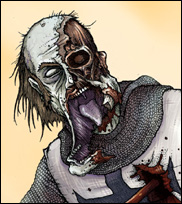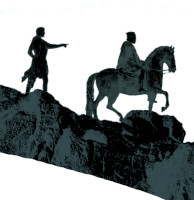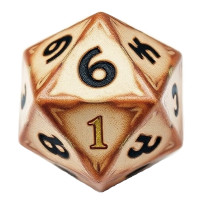Few have been the reflections of English Plantation America in Spanish context, either in this or other accounts. Southey’s book, however, an outtake from a project on Brazil, provides many parallels. Our common Anglo-American perspective is that two great conquests in Mexico and Peru resulted in a monolithic take over by Spain in the 1500s and that “push back” came in the 1800s age of revolution. The actual fact is that Spanish conquests had many of the same dynamics as English. Most tribes allied or submitted to the invaders as an exchange of a native yoke for an alien one. Then, as it became clear that the cruelty of the invader was systematic and would not end but in cultural or biological extermination, tribal revolts occurred. These rebellions, later characterized as “wars,” were, at the time they occurred called revolts and such.
Southey, in pithy style, sometimes striking fun at the “bombast” of Spanish accounts, recounts the hero Orsua putting down five Indian revolts in Peru and Columbia. Earlier, an expedition of “Indian” bandits armed with iron weapons, accompanied by Portuguese adventurers, involving even a German, up out of the interior, bring the legend of Cities of Gold, of The Sun. Supposedly these gold working Indians, perhaps previously supplying artifacts for the Incas [whose final ruler was not defeated until the mid 1600s] were willing to trade gold for iron. Orsua, a flawed hero, who while not near as cruel as most of his men, was smitten with the love of a widow mistress, the most beautiful woman in New Spain, was assigned the mission. He did not leave her behind, and hence doomed her and himself.
There were not only Indian revolts but Spanish revolts against the King: by Gonzala Pizzaro, Giron, Don Sebastion. Orsua would be subject to a revolt as well, and his usurper after him. Towards the end of the book, one sees that a shadowy figure has been at work, a man who has been condemned to death, imprisoned, reprieved for military service. This man was of noble birth and poor, very literate, able to quote Virgil to his fellows. This small, bitter fellow, shot twice in one foot and lamed in Giron’s Revolt, is Lope de Aquirre, “El Loco,” or “the Insane One.”
Aguirre was not a brave man, did not have physical courage. He was, however outrageously brave when he was among men who he had convinced to be managed by him—for he did not lead. Aguirre was a managerial personality, a prime conspirator, who refused to take the lead until the very end of his rapacious run as a tyrant.
Thus far, we have established that revolts by Indians were common in New Spain, and that they followed the pattern of the revolts in New England which we have been taught were “wars” waged by sovereign foes against innocent New Englanders. Also, while we are taught that only black slaves and the Founding Fathers revolted against Anglo rule in New England, English unrest was as common as native unrest, and tracks with the Spanish situation. Likewise goes the Age of Piracy, which we are taught, as a predominantly Anglo-American event, which it was, was mere crime. A reading of Defoe’s General History of the Pyrates has shown that piracy was in large part a revolt against the very form of managerial conspiracy that Aguirre exemplifies in all of his actions.
Aguirre’s mutiny begins and ends in piracy and is deeply cruel, with the butchery of women and even the giving of them to cannibals as food. Indeed, Aguirre kills his own daughter and has a mixed race slave butcher the most beautiful Spanish woman in New Spain, a woman that first prays for the deliverance of her mixed race Christian sisters. Aguirre is so weak he tries to shoot his daughter, is easily disarmed by a woman, and than butchers his daughter with a dagger. Yet, he, the manager, destroys an expedition of some 500 men, including a half dozen heroic captains, who were brave and loyal. Aguirre, thence offers a microcosm of Western Civilization, beginning with hero kings and ending with shadow puppet masters. In the end, he is incapable of leading 40 gunmen to victory over 3, for he does not lead, but manages. He began the expedition under Orsua as the “Master of Camp,” the manager of logistics, the quartermaster.
The events occurred in 1560 at about the time Hawkins, Drake and others were beginning to establish the rule of the English Sea Dogs over Spanish arms at sea. The events of Aguirre’s crimes will predict much of what transpires in northern, English latitudes. Points of interest are summarized below. The only quotes shall be those of Aguirre, who wrote a letter to the King of Spain, explaining his crimes!
In 1541, a German named Utre claimed to find the City of Gold, which may possibly have existed, but might have been decimated by disease ahead of further exploration.
The Tudela or Muros tribe ate a Christian monk and were afflicted with such hemmoroids that they swore off of cannibalism.
A rebellion of Maroons or cimarones, mixed race runaways, took Orsua two years to put down, in the end, through a truce.
There was also a tribe of “Hooded Indians” that rebelled.
The chief of the Capenzo Indians was, by them, called “Papa.”
The above three points and the bandit Indians with iron weapons allied with Portuguese, suggest early racial mixing from before recorded conquests.
Orsua’s most severe concerns were the need to send out captains with detachments to establish base camps, but knowing that some of these captains and most of the men were so compulsively cruel that their actions ahead of his arrival, would thwart his chances to ally with tribes in the interior. Aguirre seems to have encouraged such cruelty from behind the scenes.
Aguirre fanned discontent among the men with his Royal Governor, Ursua, at the same time that he whispered into Ursua’s ear of conspiracy. One by one the most honest men were dispatched in this way. Since the bravest men were sent out on detachments, they would return after murders had been committed or men condemned. The common use of duty as a galley slave for breaking expedition rules embittered the least disciplined men against the governor.
Orsua had problems with his clergy having religious debates and had to appoint a kind of bishop.
Aguirre eventually arranged for the election of Guzman, a weak man, as “King,” refusing the office himself. He pushed Guzman to kill his most loyal men under false charges and eventually disposed of his puppet.
Aguirre was then unable to hide his deep hatred for able and brave men and continued purging the ranks, reducing his men in very Joe Stalin fashion to the point where they could not operate as effective pirates.
Slaves of all races were present. But negro slaves were favored as spies and messengers, just as in Plantation America. Aguirre preferred Negroes over Spanish as crew when they could be acquired. Most of the skilled carpenters were Africans.
Aguirre reveled in hanging men at government gallows and challenging the King to bring them back to life. He did write to the King about having a Lutheran among his men butchered for blasphemy.
Two recruitment phrases he used, were, the first a quote from Virgil, “Fortune favors the bold,” and that he wanted men “who would throw dice with the Devil, and stake their soul on the cast.”
To the King he wrote, “We make a cruel war on thee, because we will not endure the oppression of your ministers,” echoed a common complaint heard throughout the English Crown’s domains and echoed by many a pirate crew and Plantation rebel, English, Indian and other. Managerial personalities in isolated plantations, naval bases, forts and camps, and on ships, easily became tiny tyrannies.
In the end, when it became obvious that Aguirre would eventually have them all kill each other to maintain his dammed perch, they turned on him with guns, the remainder all too cowardly for steel. After the first shot glanced on his chest he said, “That’s badly done.” After the second sank into his chest he replied, “This will do,” and fell dead.
Aguirre, one of the cruelest men in human history, senseless to the core, was the ultimate nihilist. Perhaps, through his dark lens he saw that just governance was not possible and decided to mock it every step of the way, taking as many weak souls into damnation as he could in plots against the good and strong to many to number, even in his brief reign of terror. This man, who destroyed 500 or more men from a managerial position, was unable, once forced into the lead of armored soldiers of the same type that took down the Aztecs and the Incas, to even defeat some herdsmen who took up hide shields in their own defense. Aguirre was no more cruel than many of the brute criminal outcasts and exiles Spain sent to the end of the earth to do its criminal will. What made him a monster was MANAGERIAL talent, the same talent that rules our politics and economics, in this world, which we are constantly reminded, is entirely free, by its very sacred nature, of CONSPIRACY.











